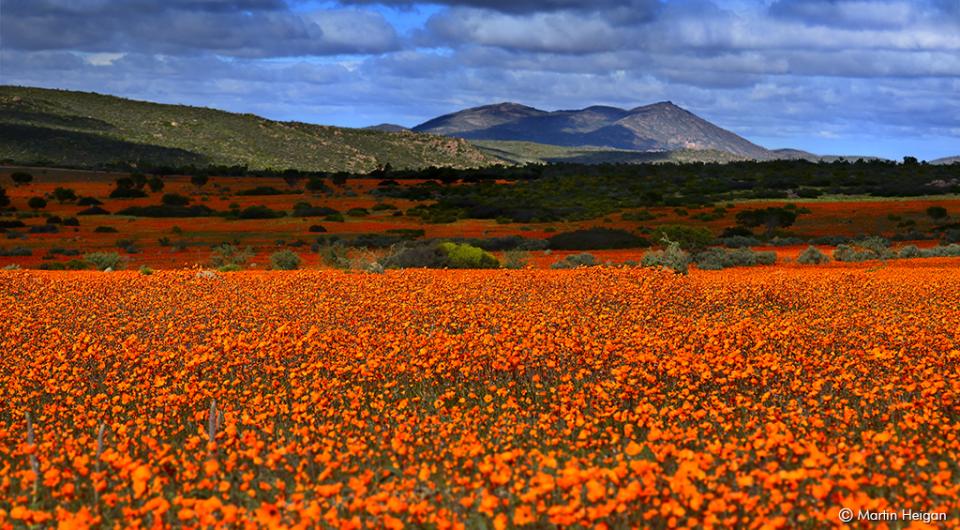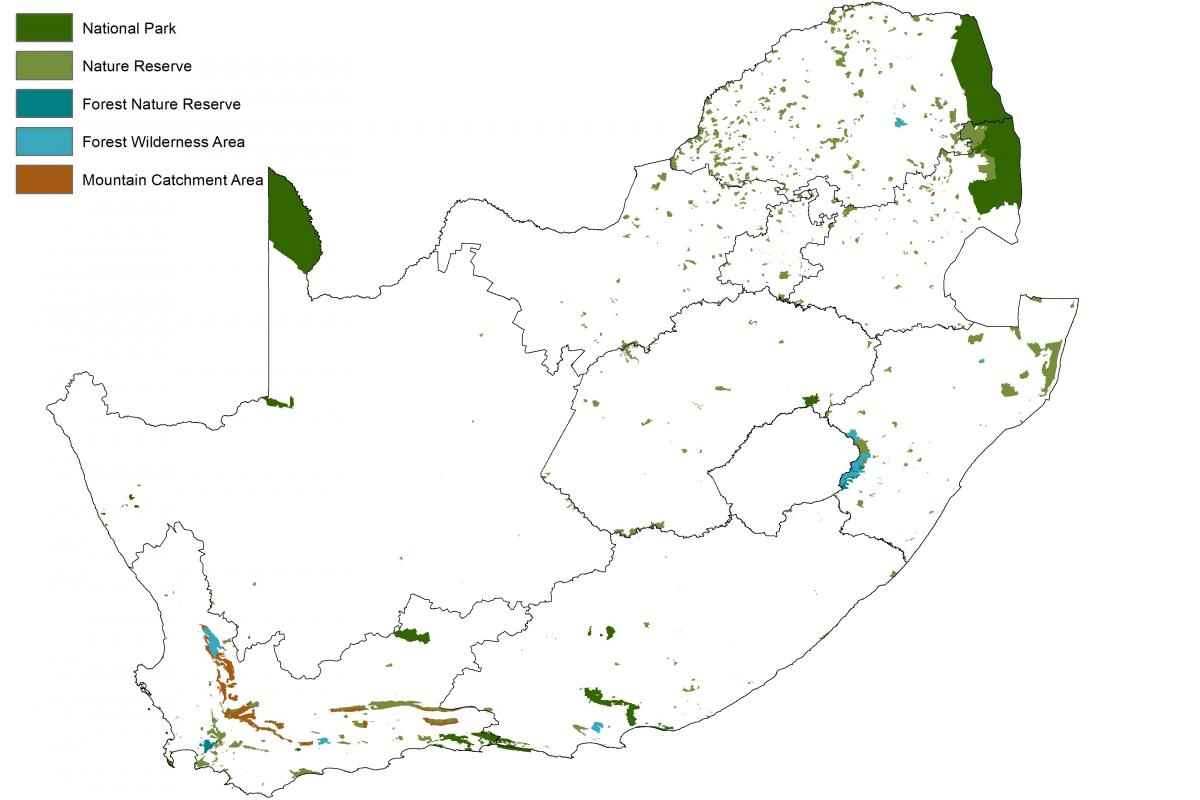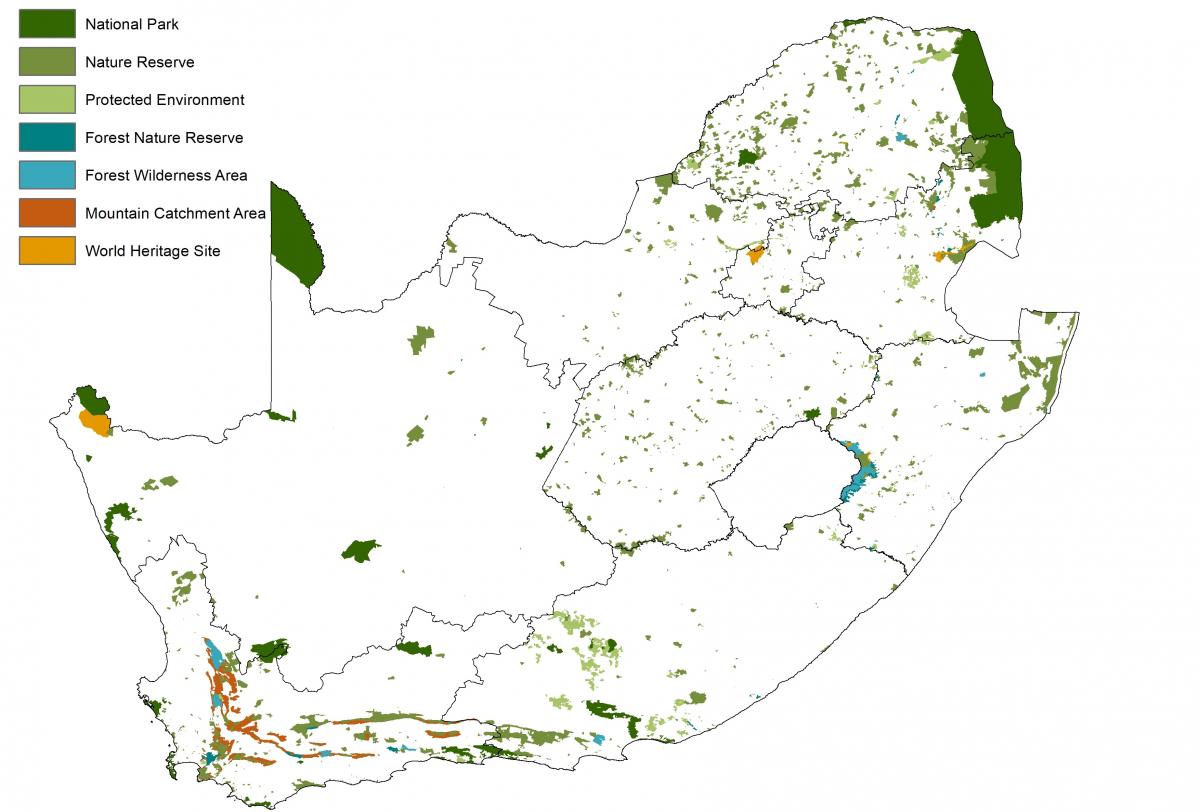South Africa releases SEEA ecosystem accounts for protected areas

On Monday 4 October 2021, South Africa launched the publication Accounts for Protected Areas, 1900 to 2020. The publication, issued by Statistics South Africa (Stats SA) in collaboration with the South African National Biodiversity Institute (SANBI) and the Department of Forestry, Fisheries and the Environment (DFFE), is the second publication in its Natural Capital series.
Land-based protected areas in South Africa are proclaimed by law and managed for biodiversity conservation and include several different categories: National Parks, Nature Reserves, Protected Environments, Forest Nature Reserves, Forest Wilderness Areas, Mountain Catchment Areas and World Heritage Sites.
The thematic SEEA ecosystem account for protected areas, were compiled using the spatial data inventory from the South African Protected Area Database which includes protected area names, types and declaration dates in a manner that provides a time series for accounts. The accounts show the size and composition of the protected area estate at the national, provincial and biome level from 1900 to 2020 across the seven different types of protected areas.
The results showed that protected areas in 2020 accounted for 112 807 km2 or 9.2%, of the total extent of the mainland in South Africa. Protected areas in South Africa have expanded across all provinces and biomes, yet the accounts have also shown that this expansion has not been even over time or space.
|
|
|
| Land-based protected areas in 1980 accounted for 5.4% of the mainland. | Land-based protected areas in 2020 accounted for 9.2% of the mainland. |
For example, the Savanah biome, the largest in South Africa, has been historically well protected, and yet the protected areas cover only 14% of the biome. The Forest biome, albeit small and fragmented, is the most protected biome in the country with 40.1% of its area covered with protection status. Notwithstanding the large recent increases at biome level, it has also been found that some individual ecosystem types remain under-protected and not adequately included in the protected area network. The National Protected Area Expansion Strategy, together with the National Biodiversity Assessment, helps to ensure that as the protected area estate grows, it includes a wider range of different ecosystem types.
It is envisioned to expand the accounts as to include marine biomes and enrich the thematic account by using the population census data to explore demographic trends in and around protected areas and also to explore quantifying the contribution of protected land to rural development and to the biodiversity economy.
The full report and accounting tables can be found at http://www.statssa.gov.za/?page_id=1854&PPN=D0401.2.
The Accounts for Protected Areas, 1900-2020 have been produced as part of the Natural Capital Accounting and Valuation of Ecosystem Services (NCAVES) project, which was implemented from 2017 to 2021, led globally by the United Nations Statistics Division (UNSD) and the United Nations Environment Programme (UNEP) with funding from the European Union (EU). In South Africa, the NCAVES project was led jointly by Stats SA and the South African National Biodiversity Institute (SANBI).
This article is based on the news stories published by StatsSA and SANBI on 4 October 2021.


